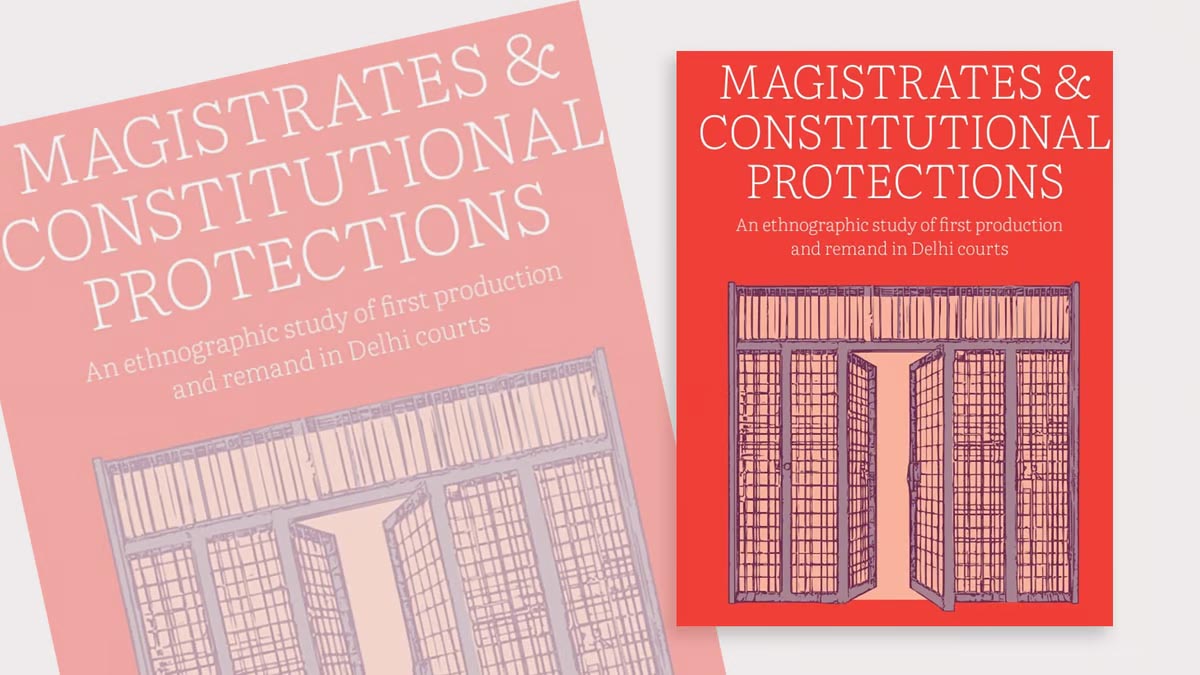New Delhi: NLU Delhi’s initiative Project 39A released an ethnographic study of first production and remand in Delhi courts. Among other significant and startling findings, the study emphasises that magistrates often mark the presence of remand lawyers meant to provide free legal assistance to the accused even when they were absent. The study was conducted by the Project 39A’s Zeba Sikora & Jinee Lokaneeta with the assistance of eight researchers observed the courtroom proceedings over a period of three months between November 2022 and February 2023.
The study focuses on the crucial issue of production of a person within the first 24 hours of arrest and determination of remand hearing, an issue pivotal for personal liberty. This study also breaks important new grounds on production and remand. The report highlights problems with trial courts, which are often the first layer of the justice system for citizens.
In one Delhi court when India was to play against England, a magistrate extended the lunch break by 40 minutes, Project 39A study reveals Delhi courts experiences!
The key points of study focus on the pretrial of the criminal legal process, first production remand, artefacts of the arrest memo and medico-legal certificate (MLC), engagement of magistrates, experience of accused, role of remand lawyers, workload of magistrate, invisibilisation of causelist, consequence of violations along with future directions.
The Executive Director Project 39A –at the release on May 15–highlighted that they undertook this study because these issues have considerable bearing on core liberty protections in the Constitution against arbitrary arrest and detention. Further, in these proceedings before the magistracy, important aspects of the subsequent trial get determined and therefore have significant fair trial implications. This study is also important because of its focus on magistrate courts as its site. For far too long, legal research in India has not paid sufficient attention to the district and magistrate courts – courts where the law gets shaped and assumes a life of its own. In order to understand first productions and remand hearings, we certainly need to travel beyond the provisions of the Constitution, the Criminal Procedure Code and various judgments that declare the law on the issues. As is plainly obvious from the findings of this study, the law on these issues is much more than just those things. It is imperative that the technical legal understanding of the law on these critical aspects of criminal justice be infused with a real understanding of its practice at its primary site.
The study calls for the display of causlists for remand cases also outside courtroom, as Project 39A team had found the absence of the same during their observations.
The study further offers directions that with extended periods of pretrial detention in the new criminal law framework[i] , there is need for urgent attention to ensure that statutory safeguards are implemented substantively and systemic fault lines addressed effectively. While the new criminal laws intend to bring about changes in the structure of the magistracy[ii], the organisation and work structure of a magistrate remains unchanged.
The key conclusion of the study can be found here:
The entire report may be read here.
[i] See S.187 of the Bharatiya Nagarik Suraksha Sanhita, 2023 which is due to replace the Code of Criminal Procedure, 1973 in July 2024, as part of the complete overhaul of criminal laws in India
[ii] A different system of judicial hierarchy of Metropolitan Magistrates in Metropolitan areas, including Delhi (Section 16 to Section 19, CrPC) has been excluded under the Bharatiya Nagarik Surakha Sanhita, 2023 (due to be enforced in July 2024).
Related:
2008 Jaipur blasts: Rajasthan HC acquits all four who were given death penalty
